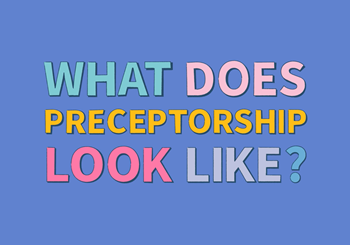The Preceptorship Process and Roles

The Preceptorship Process and Roles
The HCPC recommends that ‘Preceptorship should be tailored to the individual Preceptee, their role and their work environment. Preceptorship should not retest clinical competence but instead, empower the Preceptee to reflect on what they bring to their role and identify support needed to develop their professional confidence.’3 (p.10)
The preceptorship process
The preceptorship process should follow a structured yet flexible pathway, allowing it to be tailored to individual preceptee’s profession, experience, and learning needs. It is designed to offer additional support during transitional periods to build skills and confidence in a new role as an Allied Health Professional or Healthcare Support Worker. The duration of this will be based on individual needs and experience. See suggested steps in the preceptorship process below.
|
Preceptorship process
|
Supervision during preceptorship
Steps in the preceptorship process
 |
Preparation
|
 |
Commencement of role
|
 |
Preceptorship agreement
|
 |
Initiate preceptorship
|
 |
Review preceptorship progress and guide learning
|
 |
Completion of preceptorship and next steps
|
See section on ‘How is preceptorship recorded?’ for suggested meeting documentation to support the preceptorship process.
Roles and responsibilities
 |
The responsibilities are based on the HCPC principles for preceptorship and are intended to be used as a reference to support organisations and teams to engage in best practice. The principles can also be used for benchmarking practice and evaluation as needed. All roles should as a minimum familiarise themselves with the HCPC Preceptorship Principles, being aware that the principles are relevant to both registered and non-registered individuals. |
Preceptorship should involve active participation from both preceptee and the preceptor with objectives set to inform the learning required during the Preceptorship period.
Learning should encompass all the four pillars of practice (clinical practice, facilitating learning, leadership and evidence, research and development) included in relevant frameworks for example the NMAHP Development Framework as well as any standards or frameworks required by the specific profession.
| Please see the following sections for further information on roles and responsibilities: |

The Preceptorship Process and Roles


